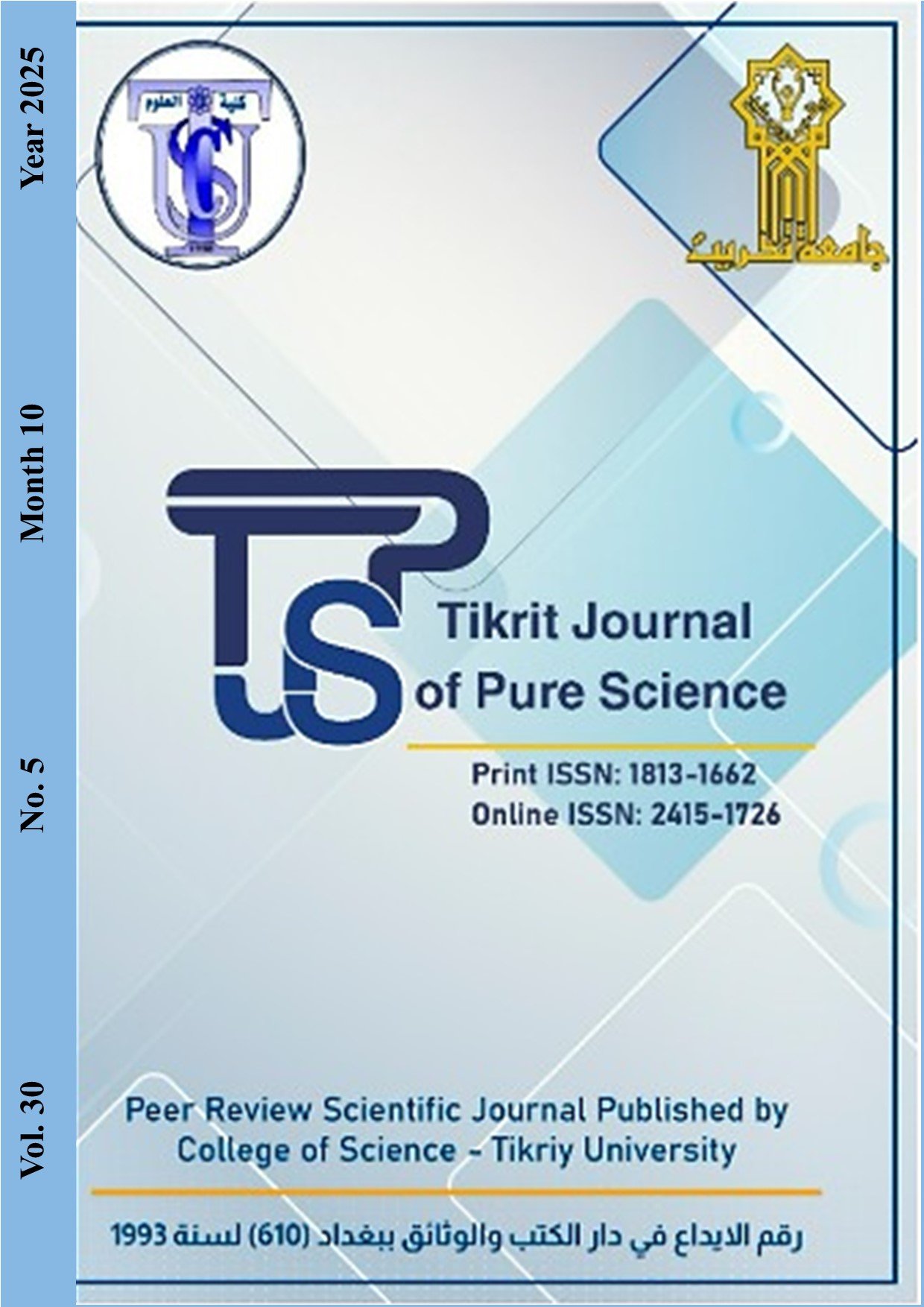Bibliometric Analysis of Scientific Research in Iraqi Universities Using Google Scholar
Main Article Content
Abstract
Google Scholar plays an essential position in evaluating researchers' activities and influencing the scientific status of universities. This look at focuses on Iraqi universities, where improving studies output is essential for fostering medical competition and improving worldwide ratings. We advanced a framework to display and analyze bibliometric information from Google Scholar profiles of Iraqi university faculty, using advanced internet scraping strategies to gather complete statistics. Our framework additionally identifies false articles and citations by staring at creator behavior over an exact period, supplemented by way of administrative evaluations for inconsistencies. Addressing gaps in cutting-edge bibliometric analyses, our studies present treasured insights to decorate the medical recognition of Iraqi universities and sell an aggressive academic environment. This study now not only contributes to knowledge studies efficiency and its impact on university ratings but also offers sensible suggestions for improving instructional requirements and visibility. Despite the essential position of Google Scholar, there's a lack of comprehensive frameworks to efficiently screen and examine bibliometric data, in Iraqi universities. Enhancing research output and identifying false articles and citations are essential to provide accurate tests of studies efficiency and educational requirements, in the end benefiting the medical popularity of Iraqi universities.
Article Details

This work is licensed under a Creative Commons Attribution 4.0 International License.
Tikrit Journal of Pure Science is licensed under the Creative Commons Attribution 4.0 International License, which allows users to copy, create extracts, abstracts, and new works from the article, alter and revise the article, and make commercial use of the article (including reuse and/or resale of the article by commercial entities), provided the user gives appropriate credit (with a link to the formal publication through the relevant DOI), provides a link to the license, indicates if changes were made, and the licensor is not represented as endorsing the use made of the work. The authors hold the copyright for their published work on the Tikrit J. Pure Sci. website, while Tikrit J. Pure Sci. is responsible for appreciate citation of their work, which is released under CC-BY-4.0, enabling the unrestricted use, distribution, and reproduction of an article in any medium, provided that the original work is properly cited.
References
1. Hammood M. Testing the agreement among three free accessibility evaluation tools: a case study of Iraqi public universities. Tikrit Journal of Pure Science. 2019;24(3):133-40.
https://doi.org/10.25130/tjps.v24i3.383
2. Abdallah SJ, Ouda GK. Using integrated library management systems for the improvement of information services based on cloud computing. Tikrit Journal of Pure Science. 2020;25(4):101-2.
http://dx.doi.org/10.25130/tjps.25.2020.076
3. Nama GF, Lukmanul H, Junaidi J. Implementation of K-Means Technique in Data Mining to Cluster Researchers Google Scholar Profile. International Journal of Engineering and Advanced Technology (IJEAT). 2019;9(1). https://doi.org/10.35940/ijeat.a2708.109119
4. Triono T, Darmayanti R, Saputra ND, Afifah A, Makwana G. Open Journal System: Assistance and training in submitting scientific journals to be well-indexed in Google Scholar. Jurnal Inovasi dan Pengembangan Hasil Pengabdian Masyarakat. 2023;1(2):106-14). https://doi.org/10.61650/jip-dimas.v1i2.225
5. Morina V, Sejdiu S. Evaluating and comparing web scraping tools and techniques for data collection. UBT Knowl Cent. 2022.
6. Varshini KS, Uthra RA. Extraction of Meaningful Information from Unstructured Clinical Notes Using Web Scraping. Journal of Circuits, Systems and Computers. 2023;32(03):2350041. https://doi.org/10.1142/s021812662350041x
7. Krotov V, Johnson L. Big web data: Challenges related to data, technology, legality, and ethics. Business Horizons. 2023;66(4):481-91. https://doi.org/10.1016/j.bushor.2022.10.001
8. Rahmatulloh A, Gunawan R. Web scraping with HTML DOM method for data collection of scientific articles from Google Scholar. Indonesian Journal of Information Systems. 2020;2(2):95-104. https://doi.org/10.24002/ijis.v2i2.3029
9. Pratiba D, Abhay M, Dua A, Shanbhag GK, Bhandari N, SINGH U, editors. Web scraping and data acquisition using Google scholar. 2018 3rd International Conference on Computational Systems and Information Technology for Sustainable Solutions (CSITSS); 2018: IEEE. https://doi.org/10.1109/csitss.2018.8768777
10. Martín-Martín A, Thelwall M, Orduna-Malea E, Delgado López-Cózar E. Google Scholar, Microsoft Academic, Scopus, Dimensions, Web of Science, and OpenCitations’ COCI: a multidisciplinary comparison of coverage via citations. Scientometrics. 2021;126(1):871-906. https://doi.org/10.1007/s11192-020-03792-z
11. Victoriano JM, Pulumbarit JP, Lacatan LL, Salivio RAS, Barawid RLA. Data analysis of Bulacan State University faculty scientific publication based on Google Scholar using web data scraping technique. arXiv preprint arXiv:220206063. 2022.
https://doi.org/10.25147/ijcsr.2017.001.1.85
12. Parikh K, Singh D, Yadav D, Rathod M. Detection of web scraping using machine learning. Open access international journal of Science and Engineering. 2018;3(1):114-8.
13. Han S, Anderson CK. Web scraping for hospitality research: Overview, opportunities, and implications. Cornell Hospitality Quarterly. 2021;62(1):89-104. https://doi.org/10.1177/1938965520973587
14. Schedlbauer J, Raptis G, Ludwig B. Medical informatics labor market analysis using web crawling, web scraping, and text mining. International Journal of Medical Informatics. 2021;150:104453. https://doi.org/10.1016/j.ijmedinf.2021.104453
15. López-Cózar ED, Orduña-Malea E, Martín-Martín A, Ayllón JM. Google Scholar: the big data bibliographic tool. Research Analytics: Auerbach Publications; 2017. p. 59-80.
https://doi.org/10.48550/arxiv.1806.06351
16. McCoy AB, Sittig DF, Lin J, Wright A, editors. Identification and ranking of biomedical informatics researcher citation statistics through a Google Scholar Scraper. AMIA Annual Symposium Proceedings; 2020.
https://pmc.ncbi.nlm.nih.gov/articles/PMC7153158
17. Chertow MR, Kanaoka KS, Park J. Tracking the diffusion of industrial symbiosis scholarship using bibliometrics: Comparing across Web of Science, Scopus, and Google Scholar. Journal of Industrial Ecology. 2021;25(4):913-31. https://doi.org/10.1111/jiec.13099 .
